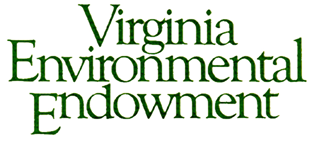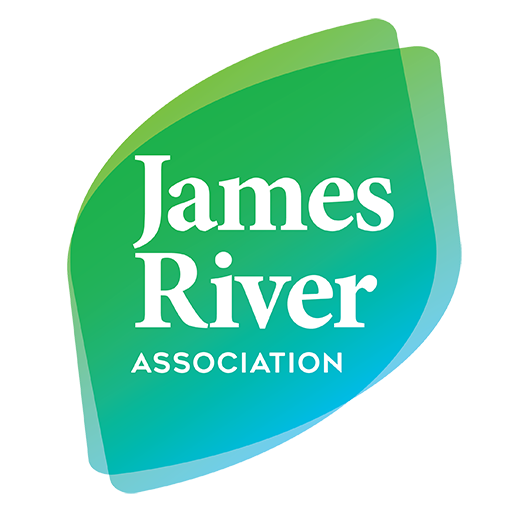For Immediate Release
Nov. 18, 2020
For Information Contact:
Kenny Fletcher (CBF): 804/638-9036, kfletcher@cbf.org
Erin Hillert (JRA): 608/239-2644, ehillert@thejamesriver.org
Joseph Maroon (VEE): 804/644-5000, info@vee.org



$2.7 MILLION EFFORT TO HELP LANDOWNERS PLANT TREE BUFFERS ACROSS THE UPPER AND MIDDLE JAMES RIVER WATERSHEDS
WORK EXPANDED WITH VEE GRANTS TO CHESAPEAKE BAY FOUNDATION AND JAMES RIVER ASSOCIATION
The James River Buffer Program (JRBP), launched in 2019 for landowners in the Middle James region, is now expanding its reach to landowners in the Upper James region. The Chesapeake Bay Foundation (CBF) was awarded a $1.1 million grant from the Virginia Environmental Endowment’s (VEE) James River Water Quality Improvement Program. This will restore 200 acres of streamside forests over the next three years in parts of Alleghany, Rockbridge, Bath, Highland and other counties in the Upper James region. The program will cover all costs for landowners and farmers to plant and maintain forested buffers.
This expands the area covered by the JRBP, currently led by the James River Association (JRA) and the Virginia Department of Forestry (VDOF). Landowners in the Middle James will continue receiving assistance through 2024 under a new $1.6 million grant to JRA by VEE that will restore an additional 235 acres of streamside forests.
The combined goal for the program is to plant 1,377 acres of trees along streams and rivers in the Middle and Upper James watersheds. Thus far, as a result of VEE grants for work in the Middle James watershed over 81,000 trees have been planted on 228 acres since 2019.
CBF will work directly with landowners and farmers in the Upper James region, extending the reach of its dedicated field team that has long given support to farmers in the Shenandoah Valley. JRA will continue its already extensive efforts to install forested buffers along the Middle James watershed.
“The JRBP effort has relied on strong partnerships with landowners, Soil and Water Conservation Districts, Virginia Outdoors Foundation, and Virginia Department of Forestry,” said JRA’s Senior Watershed Restoration Manager Amber Ellis. “We are excited to continue those efforts and expand the program with CBF as a key leader in our headwaters.”
Starting in January, CBF will launch the JRBP in the Upper James. The program directly pays for all project costs, including design, site preparation, materials, installation, and three years of establishment support. There is no out-of-pocket cost to the landowner. The Upper James work will prevent nearly 200,000 pounds of sediment pollution from entering the James River and Chesapeake Bay each year, and substantially reduce nitrogen and phosphorus pollution.
“The hundreds of acres of new forested buffers created under this program will lead to cleaner rivers and streams, more wildlife, and greener pastures,” said CBF Virginia Executive Director Peggy Sanner. “We are deeply grateful to VEE for this important opportunity to expand work in the Upper James River watershed, which will ultimately have lasting benefits for farmers, landowners, and waterways across a large part of Virginia.”
This program will supplement existing programs, filling a need for many landowners. CBF will partner with organizations like Trout Unlimited, local soil and water conservation districts, and others to provide landowners with the ability to make informed choices about how to best increase streamside forests.
Restoring buffers of trees and native plants along waterways absorbs and filters agricultural pollution. It also stabilizes eroding stream banks, reduces the threat of flooding, shades and cool streams so that native fish like brook trout can thrive, and creates habitat and food for wildlife.
Since 2018, VEE has awarded grants totaling over $11 million to improve the water quality of the James River, a major tributary of the Chesapeake Bay.
“Creating forested buffers along streams is one of the most cost-effective ways to reduce pollution to waterways. Everything flows downstream. VEE’s investment in these projects will fill a critical gap, leading to significantly cleaner water from mountain streams to the tidal waters of the Chesapeake Bay,” said Virginia Environmental Endowment Executive Director Joseph H. Maroon. “We are pleased to be supporting the collaborative efforts of CBF, the James River Association, and their many partners in this very important work.”
With support from the Natural Resources Conservation Services (NRCS) and the Virginia Commonwealth University’s Center for Environmental Studies, some of the projects under this program will encourage the comeback of the endangered golden-winged warbler, a bird whose population has declined by roughly two-thirds in the past 50 years.
VDOF has worked closely with JRA in expanding forested buffers in the Middle James Watershed.
“Almost every day the Virginia Department of Forestry assists landowners who are establishing or maintaining riparian forest buffers. A number of factors influence the health of the Chesapeake Bay, and riparian forest buffers are the solution to many of those challenges,” said VDOF Assistant State Forester Terry Lasher. “The VDOF and our partners, like JRA, VEE, and CBF, have a long history of working together to find practical, realistic on the ground solutions to reduce sediment and nutrients from entering our waters. Focusing our joint efforts on forestland in the James River watershed is a critical step to achieving Virginia’s Chesapeake Bay goals. We look forward to continuing our partnership and congratulate JRA, CBF, and VEE in making a commitment to the Chesapeake Bay and the working lands and habitats of the Commonwealth.”
Landowners can apply to the James River Buffer Program visiting www.jamesriverbuffers.org or emailing buffers@thejamesriver.org. Upper James residents are encouraged to visit the website and enter their contact information so their application can be processed starting January 2021. Under the program there will also be opportunities for volunteer tree planting and workshops for residents.

